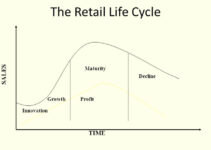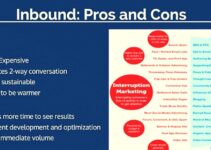Products lines play a significant role for companies that want to develop a connection with customers by offering a variety of products to meet their needs. Once customers are aware of the brand, the company could add new products to the lines. Today, we’ll discuss what is product line; how the product line works; its depth, extension, and examples.
What is Product Line?
The product line is the grouping of similar products under one brand that the company is offering. Usually, businesses and companies offer various products lines under one brand. They can launch a completely new products line or extend the current one. The marketers and the products lines managers are the key figures responsible for the growth of the products lines.
They do so to lower the risk factor and develop a strategic market campaign. Brands launch new products lines or add new products to strengthen their footprint in the current market or gain a competitive edge, entice new customers, and attract the existing ones.
Some companies amplify their products lines because they have earned the trust of customers and want to exploit it for profitability. It perfectly makes sense when you research new products and implement them; companies increase their products lines to expand their income streams. They would launch completely new products lines in the new segment of the market and amplify their market share.
How Product Line Works
The products lines extension is when you include new products into their products lines in order to attract the attention of customers. For instance, a company manufactures protein powder for bodybuilders; largely bodybuilders and athletes buy their products. In order to attract new customers and amplify its customer database, the company should offer nutritional supplements for females.
Brands employ products lines to attract more and diversify their customer database. Marketers and advertisers employ products lines to gain a competitive edge. For instance, two coffee brands are competing in the market; one brand decides to expand its product portfolio by offering tea along with coffee to attract new customers that prefer herbal tea over coffee.
When you’re marketing, products lines build up the overall marketing strategy of the company. While structuring products lines, you align goals and objectives with new brands. Often, products lines managers have the responsibility of developing campaigns.
Product Line Depth
There is such thing as the ideal products lines depth. The products lines may comprise 5 or 9 products, and they still are successful. Maintaining low depth would impact your brand because customers have got a lot of choices available to them. If the depth is high, then it would dilute the company’s perception of the products lines and eat up the sale.
Low Depth
Companies could maintain a successful products lines depth of two; it means two products under one brand or in the same products lines. In other words, you’re offering strawberry drinks and mango drinks. Some customers that like grape or orange juice won’t visit your store because of limited choices. It limits the company’s target market and decreases sales.
High Depth
High depth means that the company maintains a high number of products in the products lines; five products under one line. For instance, the company offers watermelon, grape, guava, strawberry, and mango drink to customers. Maintaining the high depth of products would badly impact the company in terms of costs if the products aren’t selling. Therefore, you should carefully add items to the products lines and maintain a good balance of products.
Product Line Extension
The product line extension is a very famous tool that many product line managers employ to amplify their offers to the customers. The product line extension comprises adding new products to the current lines. However, companies perform products lines extension due to following reasons;
Lower Risk
It’s not risky to launch a new product in an already recognized brand. When you already have a database of customers, it creates a favorable environment for you to launch the product.
Loyalty
The loyalty of customers to the brand is a great plus point for you because they would try out your new product as soon as you launch it. You don’t have to market it to them or convince them.
Existing Brand
Current branding helps the line extension to be aware of the brand. If the loyalty element is there, then it would help your new products to develop the market share.
High Market Share
When you introduce the new products under the current brand, it would amplify the company’s market share from the existing customer base.
Version of Products
Launching different versions of the same products would help companies to diversify the risk factor. It would make customers think about whether to keep using the basic products, or try out the new features.
Examples of Product Line
Coca-Cola
Coca-Cola is maintaining a portfolio of over 500 brands under its umbrella. Some of the main brands and products under the product line of Coca-Cola are as follows;
- Coca-Cola
- Aquarius
- Fresca
- Fairlife
- Honest
- Fuze Tea
- Costa Coffee
- Georgia Coffee
- Simply
- Innocent
- Minute Maid
- Smartwater
- Dasani
- Fanta
- Sprite
Nestle
Nestle is maintaining a portfolio of 30,000 products and 8500 brands under its umbrella. Some of the main products and brands under Nestle are as follows;
- Pure Life
- Kit Kat
- Maggi
- Haagen Dazs
- Nido
- Merrick
- Felix
- Purina One
- Garden of Life
- NAN
- Illuma
- Milo
- Nescafe
- Nespresso
Conclusion: What is Product Line? Depth, Extension, Examples
After an in-depth study of what is product line; how it works, its depth, extension, and examples; we have realized that products lines are very important for your business. If you’re planning to increase it; then you should keep in mind the abovementioned tips and suggestions.

Ahsan Ali Shaw is an accomplished Business Writer, Analyst, and Public Speaker. Other than that, he’s a fun loving person.


